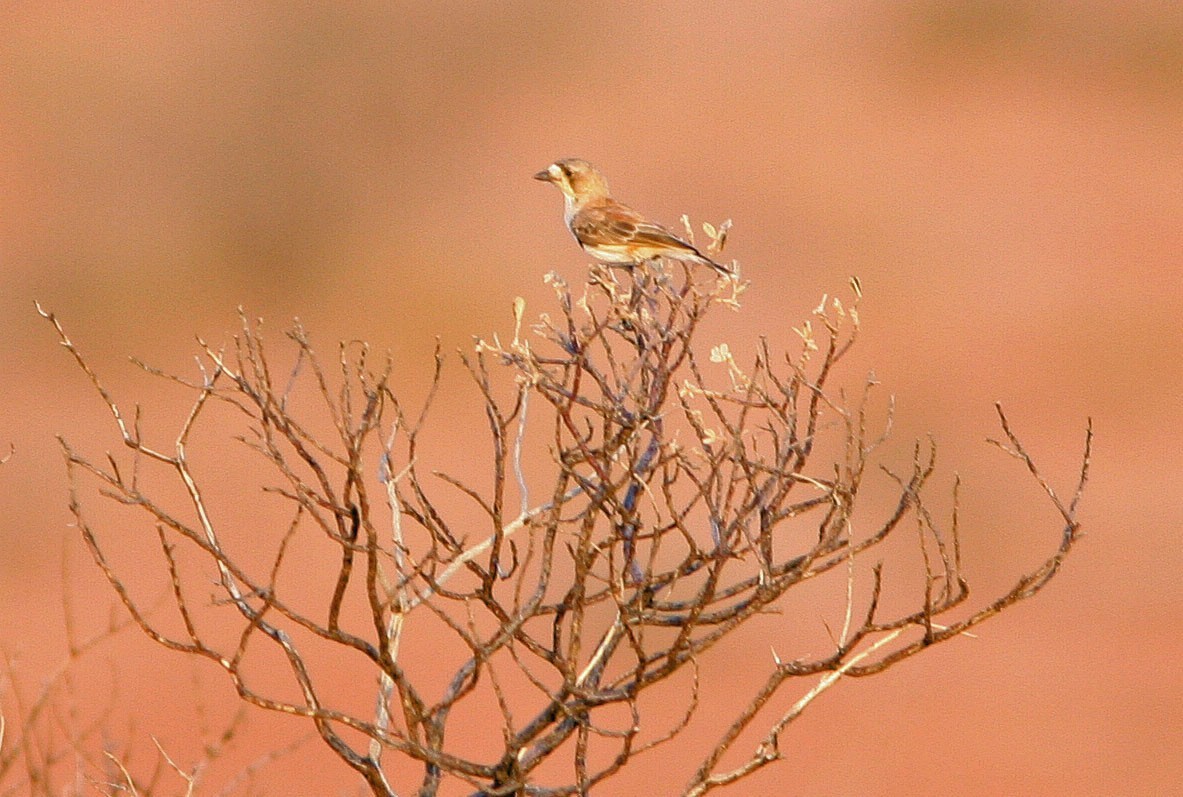Banded Whiteface
A species of Whitefaces Scientific name : Aphelocephala nigricincta Genus : Whitefaces
Banded Whiteface, A species of Whitefaces
Botanical name: Aphelocephala nigricincta
Genus: Whitefaces
Content
Description General Info
 Photo By Don Roberson
Photo By Don Roberson Description
The adult banded whiteface is around 10 cm (4 in) long. The upper parts of the body and head are greyish brown. The face has a white mask bordered by a darker band which runs vertically across the region of the eyes. The upper breast is pale blue-grey and the underparts white, separated by a prominent black band across the breast. There are red-brown patches on the flanks. The bill and legs are black and the eyes are white. The plumage of male and female are alike and juveniles are duller. 
Size
10 cm
Nest Placement
Cavity
Feeding Habits
Banded Whiteface consumes insects, seeds like Setaria viridis, and forages in pairs or small flocks, often on the ground but occasionally in low vegetation. Unique flocking with Acanthiza chrysorrhoa and Crimson Chat is observed.
Habitat
The habitat of banded Whiteface encompasses open shrublands and grasslands within arid to semi-arid regions. They are typically found in environments that consist of sandy and stony terrains, often dotted with a variety of sparse vegetation such as Acacia, Maireana, Atriplex, Eremophila, Cassia, and Hakea. Banded Whiteface also shows a preference for areas with spinifex and is known to frequent regions that have experienced burning or where vegetation is dead.
Dite type
Insectivorous
General Info
Feeding Habits
Bird food type
Behavior
Like the other birds in its genus, the banded whiteface hops over open ground in pairs or small groups foraging for seeds and insects. Nesting takes place in winter from July to September or after a period of rain. Located on the ground near shrubs, the round hollow nest is constructed of twigs and grass and has a long tubular entrance. Both the nest and the tunnel are lined with flowers and feathers. The clutch consists of three or four matte white eggs with brown blotches mostly at the larger end. Tapered oval in shape, they are around 17 mm long by 13 mm wide. The banded whiteface has been reported to enter torpor at night in winter months, reawakening as it warms in the morning. 
Distribution Area
A nomadic or sedentary species moving according to seasonal conditions, the banded whiteface is found in a very large range from southwestern Queensland across dryer parts of central and southern Australia into mid-Western Australia. It inhabits mulga woodland, gibber plains and sandhills, and frequents saltbush and spinifex. 

 Photo By Don Roberson
Photo By Don Roberson Scientific Classification
Phylum
Chordates Class
Birds Order
Perching birds Family
Australasian warblers Genus
Whitefaces Species
Banded Whiteface